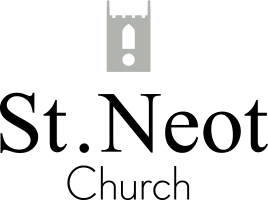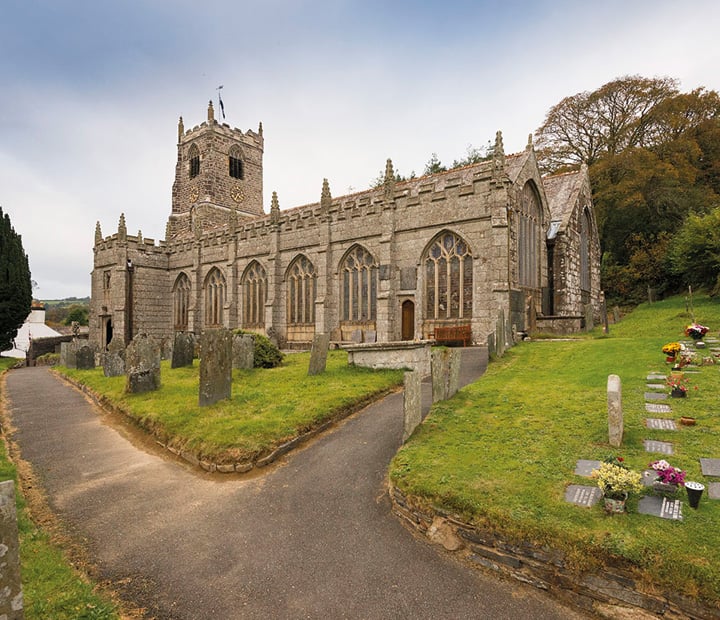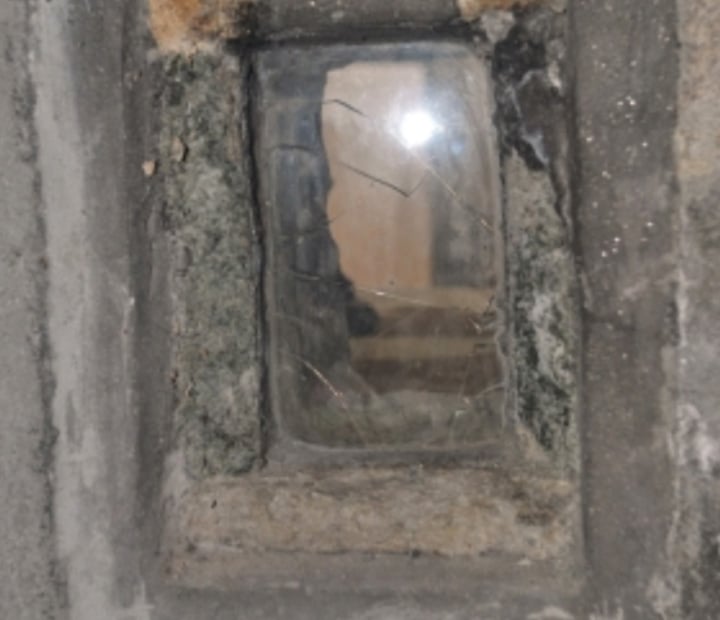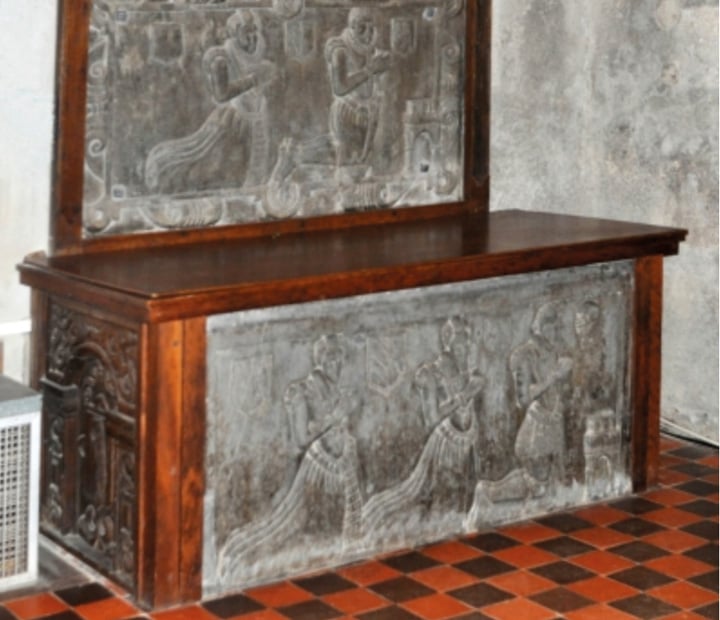An Historical overview of St. Neot Church
The nave and south aisle of the Church date from the fifteenth century, the tower from a little earlier. The list of Vicars is "complete" from 1266 but there are no traces of an earlier building. The Church is magnificently sited and was so designed that it showed its best side to the south. Here the south aisle is embattled and the porch with its upper storey is incorporated in the scheme. The date of this is approximately 1425. The north aisle, which was built about a hundred years later and which faces into the sharply rising hillside, is of much plainer proportions.
Our Patron Saint
It is impossible to be precise about the life of our Patron Saint. Charles Henderson, the Cornish historian, suggested that the saint who gave his name to the parish was Aneitus, a Celtic saint who lived and preached locally. Various interpretations of his life written by academics in the Middle Ages tend to differ, but that he was a good and learned man seems beyond doubt. Well respected for his piety, humility and spiritual counselling one legend tells of this man of small stature standing up to his neck in water while reciting all 150 of the Psalms. It is believed he died in approximately 877, and his remains were said to have been in the north wall of the Chancel, from where they were stolen in 974, and re-interred at St Neots in Huntingdonshire.
Leper's Squint
Henderson mentions in the Cornish Church Guide "In 1313, the vicar having become a Leper, the Bishop appointed a coadjutor and ordered certain appartments in the vicarage to be set aside for the Leper's own use." He continues with "In 1321 the Church was re-dedicated, but it was wholly rebuilt on the present magnificant scale in the following century." The smaller Ogee arch by the squint is certainly older than the other arches in the church. Suggestions have been made that the stone of this arch could have come from the earlier building, the medieval fragments of wall painting are just to the side of the squint and Ogee arch. Was this small part of the building near to where St Neot's bones were, kept original during the 1400's re-building preserving the previous century's squint that was built for the "Leper" vicar?
Construction of the Church
Construction of the Church Great skill was used when the Church was built in about 1425, with the huge blocks of granite used in the construction cut to precision and the seven pointed arches separating the south aisle from the nave being completely uniform. On the north side of the Church the seventh arch at the east end is clearly older than the others and lower, and may have been the entrance to a chapel.
Stained Glass Windows
Robert Tubbe, Vicar from 1508 to 1544, was possibly the man behind the present designs which were greatly restored by John Hedgeland in 1826-28. During this restoration Hedgeland changed parts of windows, and shifted them around, so that it is now impossible to know what they were originally like. Nevertheless in twelve of the windows, half of the glass is original.
The finest and least restored window, the Creation Window, is at the east end of the south aisle and is full of delightful things representing the Creation (including the newly created bird flying off the tip of His finger), the Fall, Cain and Abel and lastly Noah politely doffing his cap to God as he receives his instructions, while the first window in the south aisle represents the story of the Flood and Noah.
Some of the wealthy parishioners funded the remaining windows, and those in the south aisle were donated by the Borlase, Martyn, Motton, Callaway and Tubbe families. The last window in the north aisle was given by the young men of the parish and depicts 12 scenes from the life of St. Neot. A further 12 scenes in the west window of the north aisle describes the life of St. George and is of unique interest as some of the legendary incidents are not found elsewhere.
The east window above the high altar is entirely Hedgeland’s work as are the two in the organ chamber and the Armorial window to the left of the south door. The Grylls family have long been patrons of St Neot Church, and Rev R.H. Grylls, a descendant of the Callaway and Tubbe families, commissioned John Hedgeland to undertake the restoration work. "Google" Hedgeland stained glass St Neot for more information.
Updates during 2004
In 2004, Richard Grylls, the present patron, engaged the services of Arthur Bradley to replace the frosted window at the west end of the Church, which obscured the belfry, with a new etched glass screen. This new window contains etchings of a dove, mirroring the dove over the baptismal font, together with fruits of the vine, and wheat from the fields, as well as a porcupine – a symbol from the Grylls family crest, and denoting both plenty and realisation of hopes. The windows are well worth viewing, preferably on a sunny day! The sun shining from the south at midday provides excellent light to view the vivid colours of the south wall windows from inside the Church.
Other Items of Interest
At the west end of the north aisle is a very fine early seventeenth century slate tomb chest on which are the kneeling figure of William Bere and his wife, part of the carved eulogy reading ‘Here lyeth Bere whom Angels to heaven beare’.
High on the north wall at the east end of the Church is a copy of the letter written by King Charles from his camp at Sudeley Castle on 10th September 1643 to the inhabitants of Cornwall thanking them for their Royalist support during the civil war.
Oak Apple Day
Every year on Oak Apple Day, May 29th, an oak bough is raised to the roof of the tower and secured. It remains there until a replacement is raised the following year as a constant reminder of St. Neot’s previous Royalist inclinations.
Male villagers wear an Oak Sprig in the morning changing this to a sprig of Boys Love (Artemisia abrotanum) at midday. If this procedure is not adhered to you run the risk of being stung by nettles!
The ceremony was originally carried out on 29th May to celebrate the restoration of the monarchy in 1660 (King Charles II). Until the middle of the 19th century (1859) it was a Bank Holiday. More information and folklore tradition is available on-line. There is even a movement to have the Bank Holiday re-instated!
This ceremony has continued in St Neot and is one of a very few in the country where this still happens. On the Frith 1893 post card of St Neot you can clearly see the Oak Branch at the top of the tower. We have researched our Church Wardens Accounts and found out that annually since 1660 (up until 1859) the bellringers were paid one shilling for their services! For further photos see the Church Interior page and the Oak Apple Day photo page.





